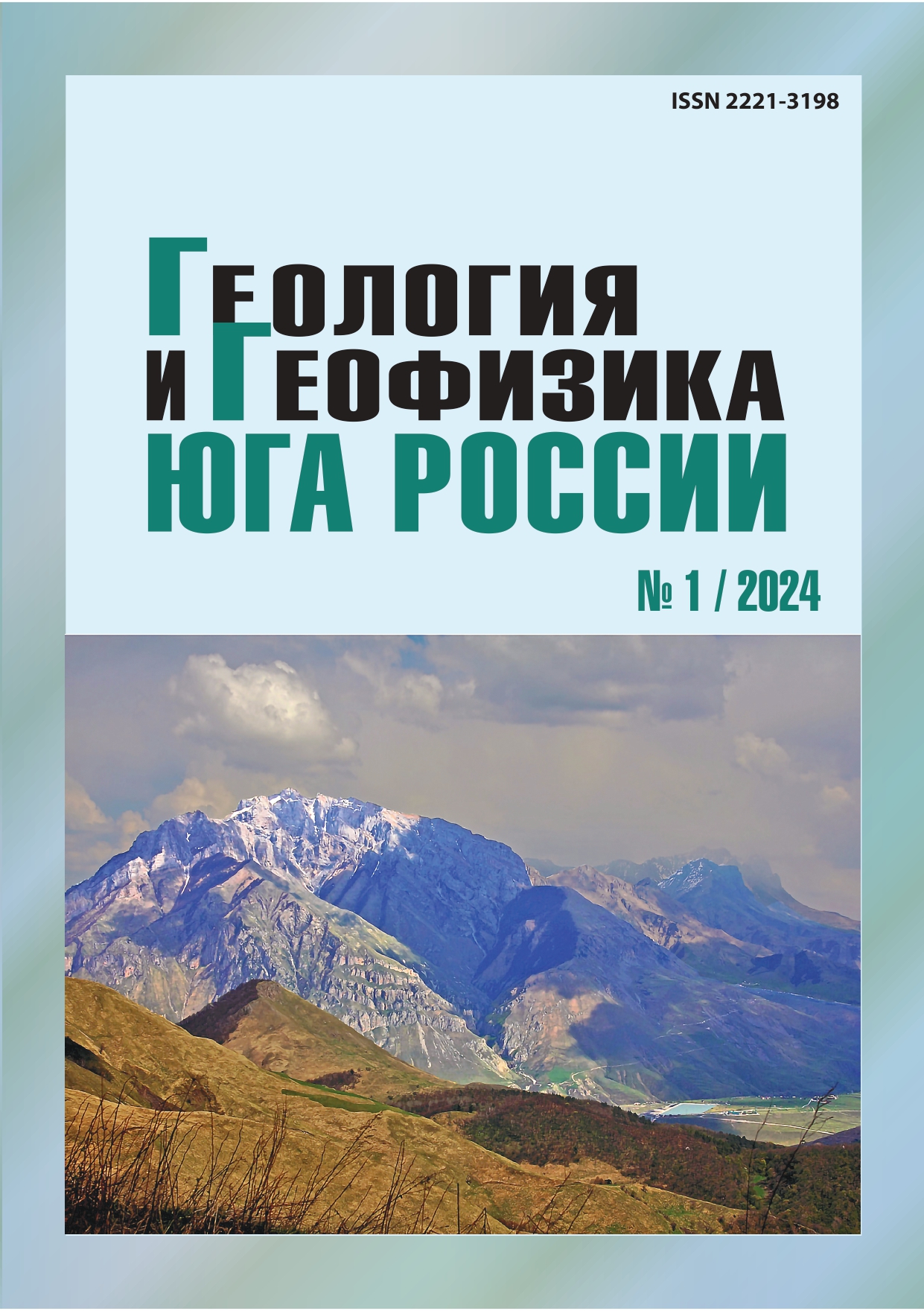Research of sources of strong historical earthquakes using geophysical, paleo-, archeo- and historical seismology: Fiagdon Basin in North Ossetia
Abstract
The relevance of the paper is determined by the urgent need to develop a fundamentally new seismotectonic model of the Greater Caucasus. Its content in addition to the spatial parameters and seismic potential of zones of possible earthquake sources, should include the recurrence of earthquakes with Mmax and the kinematics of predicted displacements in the source based on direct data. The aim of the work is to obtain parameters for the source zone at the southern foot of the Skalisty Range. Research methods: georadar profiling, methods of paleo-, archeo- and historical seismology, focused on obtaining specific parameters of the sources of paleo- and historical earthquakes. These methods make it possible to approach the problem of reconstructing a long-term seismic regime based on direct data on the age and scale of occurrence of specific seismic events over a representative time interval. Results. In the ruins of the site Atsonaga, the effects of complete seismic destruction were found; intensity – IX-X. Primary seismotectonic ruptures were discovered, which form a regular rightlateral strike-slip structural pattern and twice displaced the ancient road by 0.9–1.1 m (the penultimate event) and 0.6–0.8 m (the last event). Before these last two events, displacements occurred repeatedly in the Holocene and led to a dextral displacement of the 1st terrace of the Fiagdon river at 8–11 m. Available data suggest that over the past 600–700 years there have been two strong earthquakes with M≥6.8, M≥6.6 and the location of the source at the foot of the Skalisty Range. Published sources and materials from central archives contain information about a strong earthquake on February 23, 1785. The source of the earthquake was located in the Greater Caucasus Mountains, south of Mozdok, where the maximum macroseismic effects were VII-VIII were recorded. Possibly, this seismic source was studied in the Ossetian ancient village Atsonaga. Research in the neighboring basins of the North Jurassic intramountain basin and the use of a wider range of historical sources will likely clarify the parameters of the last earthquake.


